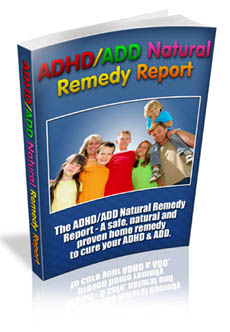What Do You Take For ADD
Many children with attentional challenges have underlying difficulties with organizing and making sense of what they see and hear. They may have trouble using their eyes to focus, recognize patterns, and see themselves in relation to their environment. They may find it hard to follow verbal directions. It may be hard for them simply to follow a physical object from left to right or up and down and, later, to move their eyes across the page to read (tracking).
Remembering a sequence of words can be a problem. Visual processing involves judging distance, and, therefore, children with these problems may keep banging into other people or objects, particularly if they and the other individuals are moving. Problems with "big-picture thinking" - seeing both the trees and the forest as part of the same whole pattern - can sometimes show up later in difficulty with understanding the concepts of quantity and, therefore, in mathematical calculations.
When confused because of these visual or auditory processing problems, a child may become inattentive in a classroom, drifting off into fantasies or becoming distracted by another child or a bird chirping in the tree outside. The child may not be able to keep up and may appear distracted when there is a need to learn something by copying what others are doing or saying, such as a new sport or song. What Do You Take For ADD
Making sense out of what we see and hear is an important contributor to our ability to think. As we will show, it's involved in how we understand time and the physical world we live in, as well as many academic activities.
When children are inattentive because of these difficulties with making sense out of what they see and hear, it's important to approach this problem by building from the bottom up. This should always begin with an eye evaluation and a hearing test, and consultation with a specialist if problems are found.
The following posts describe how children develop the ability to organize and make sense out of what they see and hear, and how these foundations may be strengthened if they did not develop fully. We describe some of the games and exercises that can be used to help children strengthen these foundations. If the child is older than the child in the example, the reader can adapt the game or exercises to make it more sophisticated. Not every child will need extra help here, but for those who do, this can do much to improve attention and problem solving.
The Stages of Visual-Spatial Thinking
Building on the work of Harry Wachs, we can lay out the developmental stages of visual-spatial thinking. From the beginning, vision helps us understand how our own bodies work, to understand how our bodies work in relationship to others and in relationship to our physical environment, and to make sense of our physical environment. For example, how does a baby know that a series of shapes - nose, mouth, ears, and eyes - equals a pattern that identifies a human face? Newborn babies can discriminate such basic patterns, so the human brain seems to be prewired for that ability. But we then need to learn to make sense of these patterns. How does that skill develop, and how can it be strengthened?
Attending to Sights
Let's start with the first stage - regulated attention and interest in the world - and how it translates into a visual-spatial framework. What "attention" means is simply taking in sights and sounds, so we want to strengthen that ability. For newborn babies, this simply means encouraging them to look at Mother's face and listen to her voice, but for older children who may often be distracted, we stimulate attention by putting them in vivid environments and encouraging them to look around and point out details that interest them.
Strengthening Activities.
During a nature walk, for example, ask the child to describe everything he can see - the colors and shapes of the flowers, the trees, the animals, the landscape, and the sky. Road-trip games are great for this: How many different cars or street signs or churches can the child identify? Have a contest between several children: Who can spot certain things first? Treasure hunts and hide-and-seek encourage detailed attention. What Do You Take For ADD
Other games or exercises for this stage include those developed by Reuven Feuerstein, a visual-spatial pioneer, in which children identify details and patterns in images of dots. In dealing with attention deficits, whatever we're doing with the child - going on the subway, going to a museum, or just shopping for groceries - is an opportunity to increase the range of things he sees, to help him notice all the details. (It's important to do that in the real world as much as possible, but you can also use pictures in books.)
For children who get overloaded by visual stimuli, though, you want to be sure to expose them to new sights in a modulated way so they can feel calm and soothed, being careful not to exceed the level they can tolerate. Bright lights or sunlight can overwhelm many children, as can bright colors - you wouldn't want to take such a child to a carnival, for example. Other children are underreactive to visual stimuli; they need the loud, bright colors because soft colors won't draw their attention.
Coordinating All the Senses.
While strengthening the child's alertness to detail, we want to coordinate sight with the other senses. For the child who is very self-absorbed and doesn't tend to coordinate sight with sound or with her own movements, find something she's very interested in. For example, enjoying an ice cream cone involves keeping it upright, tasting it, maybe smelling it, and feeling its coolness on her tongue. To learn more, you can check out What Do You Take For ADD.


